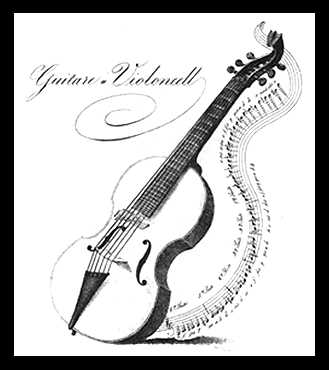As a guitarist one doesn’t always get caught up in instrument envy. You play the most popular instrument on the planet that is well serviced by devices and iterations to create a huge range of sounds to service a diverse array of musical genres.
 I don’t sing too well. This is my biggest musical deficit and it has informed how I approach the guitar – particularly as a soloist. I use Les Pauls with vibrato, slides, bends etc. to help vocalise the sound so to speak. It had occurred to me that given the music I listened to in my formative years (Queen mainly though lots of so-called early music) I was really lusting after the sound of bowed strings.
I don’t sing too well. This is my biggest musical deficit and it has informed how I approach the guitar – particularly as a soloist. I use Les Pauls with vibrato, slides, bends etc. to help vocalise the sound so to speak. It had occurred to me that given the music I listened to in my formative years (Queen mainly though lots of so-called early music) I was really lusting after the sound of bowed strings.
So I’ve been on a five year quest to find a way of adapting my guitar prowess to a bowed instrument. It’s not easy for guitarists to transition to cello (and forget about the violin!). It didn’t quite have the sound I wanted anyway. I did fall in love with the viol da gamba, a guitar relative, which features frets and a relatively familiar tuning. The viol playing position (between your legs) didn’t appeal fully to me nor did the choice of gut strings and tied frets though it is an amazing instrument in it’s own right and one I may turn my attention to again.
Jonathan Wilson & The Guitarviol
Anyway… After some extreme googling I discovered Jonathan Wilson – a guitarist/luthier who suffered with the dilemma I did. Jonathan in his quest to find make a bowable guitar had discovered an instrument created by the luthier Stauffer in the 19th century. This bowable guitar was very briefly fashionable with no real repertoire beyond Schubert’s Sonata in A minor for Arpeggione and Piano (more often played on a cello these days).
Jonathan’s approach enhanced the arpeggione concept so much that he created the Guitarviol. It’s not for me to give a hyper detailed account but the highlights are:
- Steel strung – Cello strings give a brighter sound and more attack than the gut of a viol or arpeggione. They’re also obnoxiously expensive unfortunately!
- Stealth frets – a scalloped finger board allows for more expressive articulation and microtonal (i.e. fretless) glissando
- Body optimised acoustically – A bowable guitar is just that so the guitarviol differs hugely for Stauffer’s arpeggione as it adapts elements of cello construction to create an instrument that makes itself felt as much as it’s heard!
The initial attraction to me of this is that I could rely on my knowledge of the guitar fingerboard to get a head start on learning this instrument.
After a process of raising funds, Jonathan building me a guitarviol, UPS destroying it, Jonathan rebuilding it I am the proud owner of a Guitarviol. 50 days into learning how to play it I’m ready to post up some work!
Learning this amazing instrument has really been a total joy for me. To be able to very quickly play these type of parts is a feeling beyond compare. Every little move or variant of technique can change the sound critically so every practice reveals a new layer or a new colour to be used later.
I’m still learning but here’s the most accomplished music I’ve been able to track and should give some idea what’s possible.
***UPDATE- January 2014*** Actually here’s a growing playlist chronicling my progress:
[soundcloud url=”https://api.soundcloud.com/playlists/8388193″ params=”color=ff6600&auto_play=false&show_artwork=true” width=”100%” height=”450″ iframe=”true” /]
Here’s some snaps:
- Bistro Plus Guitarviol
A little improvisation:
And finally here’s an early attempt at some paddywhackery!








Garlic Bread? Garlic??Bread?? Guitarviol? Guitar?? Violin?? Together???
But yes, fan-bloody-tastic. That’s what I think.